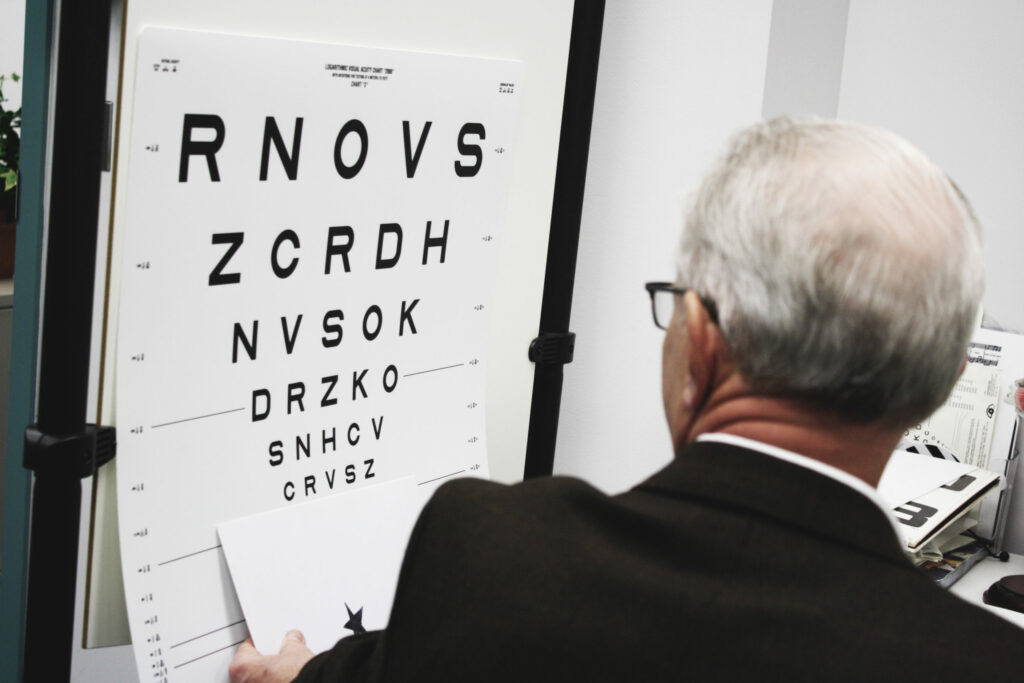
Details & Assistance in February for Low Vision Month
The Central Association for the Blind and Visually Impaired (CABVI), aligned with the National Eye Institute (NEI), offers information and assistance with low vision this month. According to NEI, 4.2 million Americans ages 40 and older are visually impaired. Three million have low vision. By the year 2030, health care professionals expect those numbers to nearly double. So, what does having low vision mean? How do you know the difference? CABVI representatives explain and offer assistance on how to determine if you need help because the good news is, there is help!
What is low vision?
An individual diagnosed with low vision has difficulty seeing even while using visual aids such as prescription eyeglasses, including reading glasses, use of medication, or has had surgery to maintain some eyesight.
Low vision makes everyday tasks difficult. Activities that used to be simple like reading the mail, shopping, cooking, and writing become challenging.
Most people with low vision are age 65 or older. The leading causes of vision loss in older adults are age-related macular degeneration, diabetic retinopathy, cataract, and glaucoma. Among younger people, vision loss is most often caused by inherited eye conditions, infectious and autoimmune eye diseases, or trauma. For people with low vision, maximizing their remaining sight is key to helping them continue to live safe, productive, and rewarding lives.
Low vision is different from blindness. A low vision patient has remaining usable sight. A person with low vision can have trouble differentiating colors of similar tone, along with images. People who are legally blind may still have some useful vision.
Symptoms of Low Vision
The symptoms of low vision are:
- Distant vision issues such as difficulty in recognizing objects at a distance
- Difficultly in near vision, e.g. while reading or writing
- Trouble in differentiating colors, specially green-blue-violate range
Please note that these symptoms aren’t exclusive to low vision. However, if you experience any of these symptoms or any other vision related symptoms, consult an eye care provider for a detailed examination.
Causes of Low vision
Low vision occurs at any age depending upon the underlying disease process and pathology involved. Although it’s commonly seen in elderly patients it’s not related to natural aging and is a disease process in itself.
Most age-related vision disturbances include changes like presbyopia and other refractive errors in the layers of the eye through which the light passes.
Common causes of low vision include:
- Cataracts – a dense, cloudy area that forms in the lens of the eye
- Diabetic Retinopathy – a diabetes complication that is caused by damaged blood vessels
- Macular Degeneration – the leading cause of severe, permanent vision loss in individuals over 60. The center of your retina, called the macula, deteriorates.
- Glaucoma – A group of eye conditions that cause abnormally high pressure in the eye
- Refractive Errors – The shape of your eye does not bend light correctly, which leads to a blurry image
The first step is to seek help by visiting a low vision specialist.
What is a low vision specialist? A low vision specialist is an ophthalmologist or optometrist who works with people who have low vision. A low vision specialist helps develop a vision rehabilitation plan that identifies strategies and assistive devices appropriate for the person’s particular needs.
CABVI offers a range of vision rehabilitation services that help people of all ages gain the skills and confidence to meet the day-to-day challenges. While vision rehabilitation cannot restore lost sight, it can help to maximize any existing sight, or for individuals with no vision, it can provide the techniques to maintain an independent lifestyle.
By providing integrated vision and healthcare services, CABVI helps people who are blind or visually impaired, including those with multiple disabilities or chronic medical conditions, lead productive, dignified, and fulfilling lives.
Treatment of Low Vision
Low vision can’t be treated or managed through regular glasses. For enabling the patients with low vision, specialized glasses and other devices are designed along with lifestyle and home modifications.
Treatment options for low vision include:
- Optical devices to assist in vision
- Magnifiers
- Prism based eyeglasses
- Telescopic and Microscopic eyeglasses
- Techniques and skills to utilize the remaining vision
- Lifestyle modifications
- Home modifications
- Easy arrangement of furniture
- Using contrast on stairs between alternating steps
- Contrast on windows, doors, switches, etc.
- Non-slippery floor and rugs
- Larger monitor or television
Vision rehabilitation can include the following:
- Training to use magnifying and adaptive devices
- Teaching new daily living skills to remain safe and live independently
- Developing strategies to navigate around the home and in public
- Providing resources and support
Some eye diseases cannot be prevented, but living a healthy life can benefit your eye health and overall well-being. Omega-3 fatty acids are excellent for health. The types of fish that are rich in omega-3 are salmon, sardines, albacore tuna, herring, and mackerel. In addition to omega-3 fatty acids, maintaining a healthy weight can foster good eye health. Make sure to exercise regularly, maintain a healthy blood pressure level, and stay aware of your cholesterol levels.
